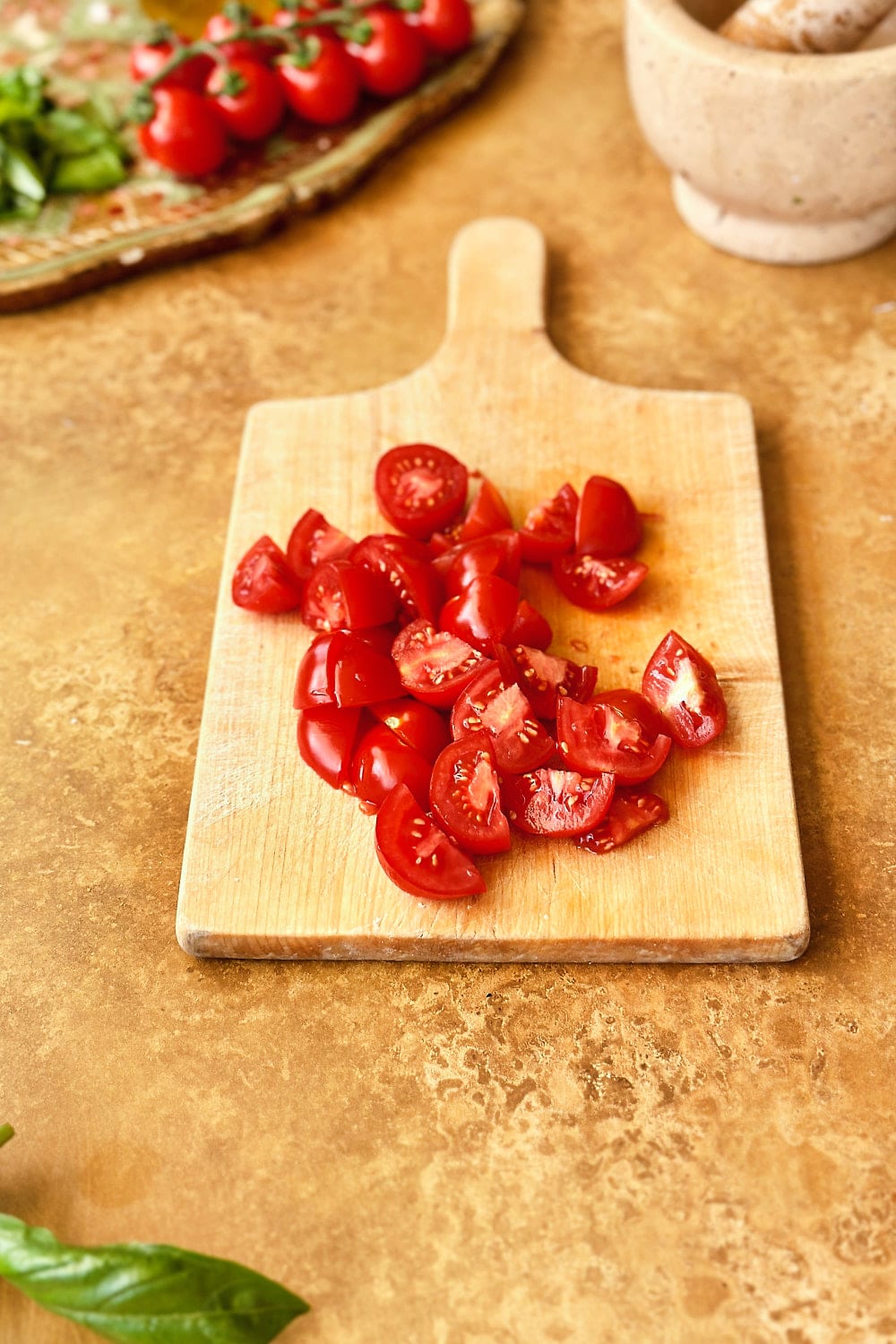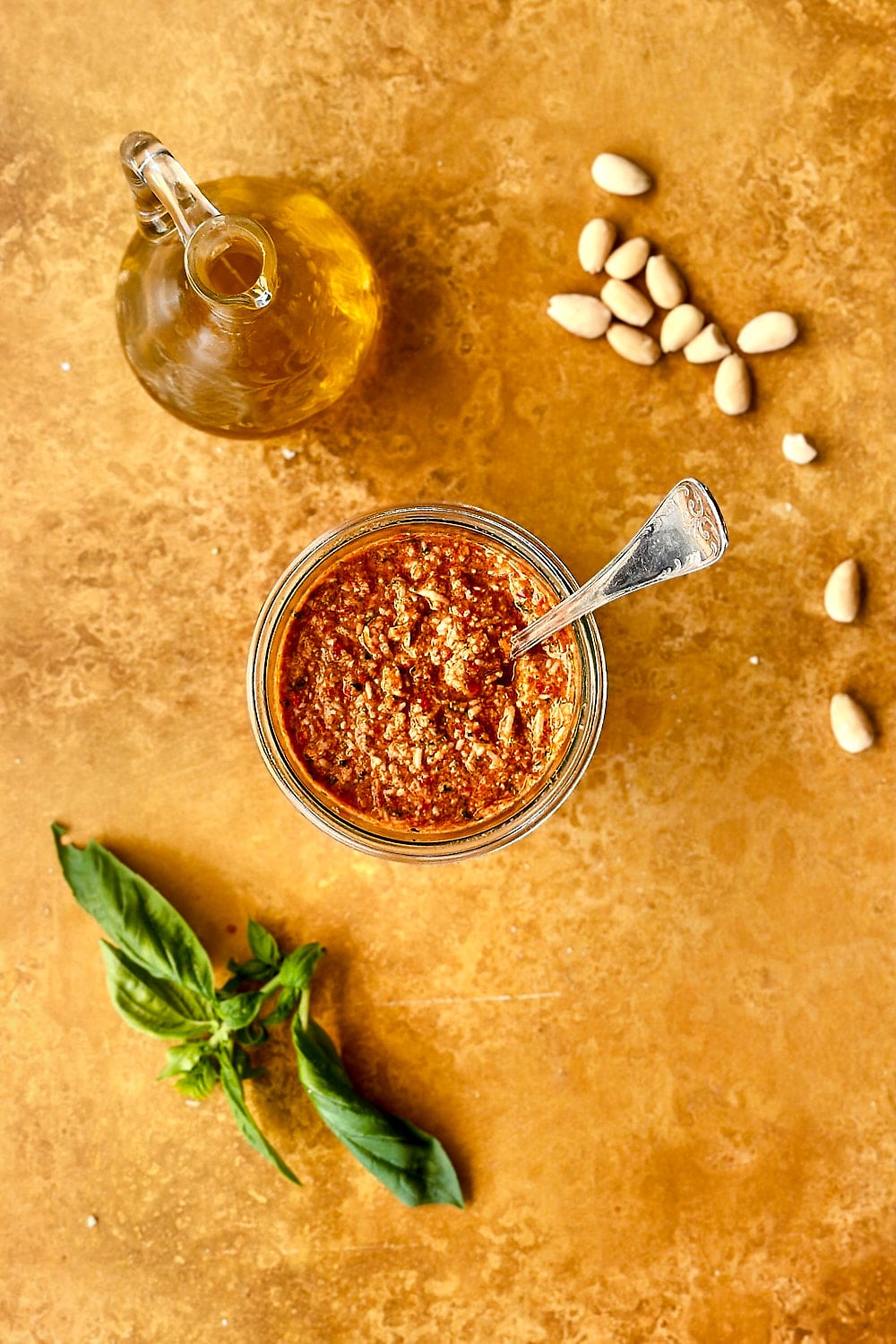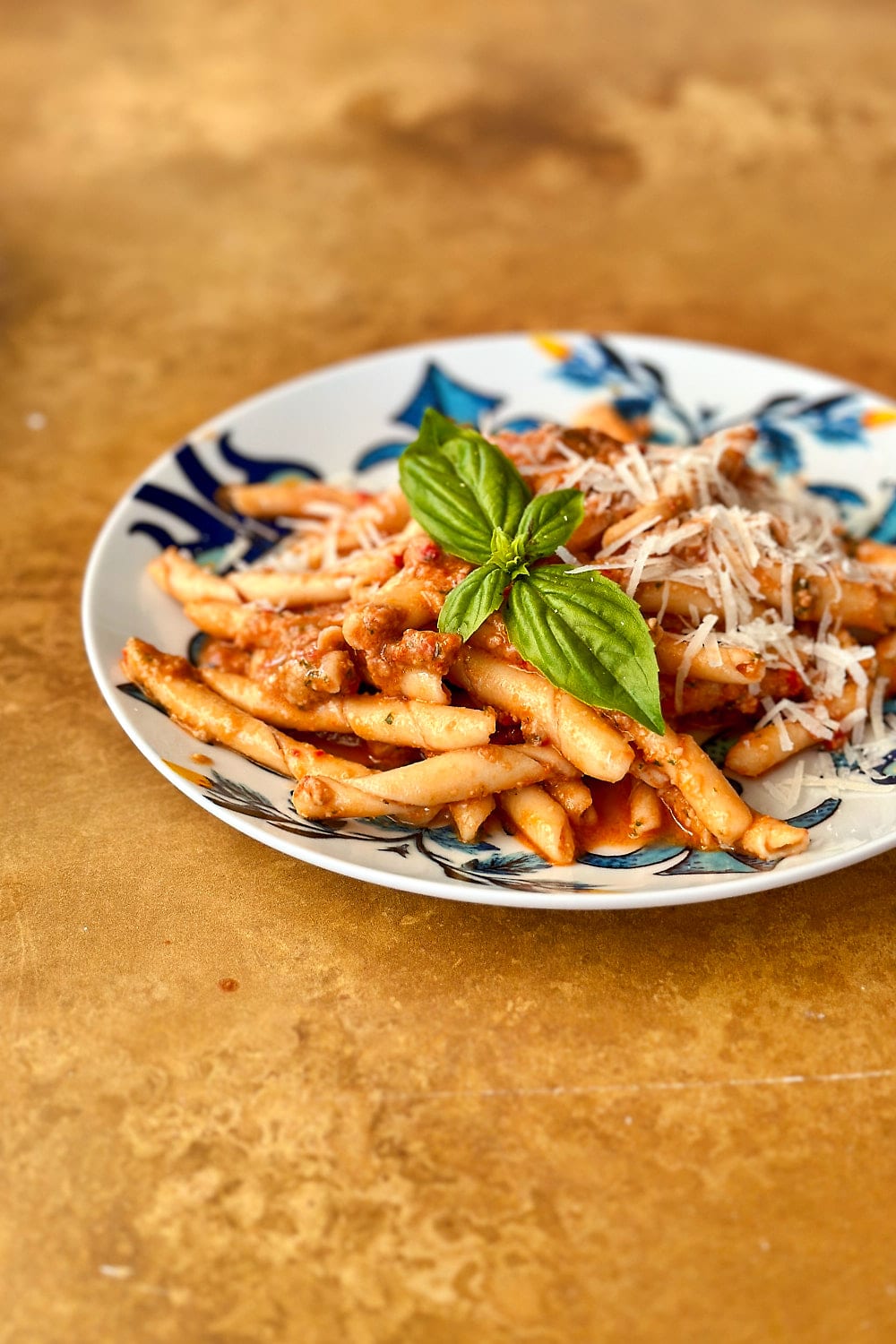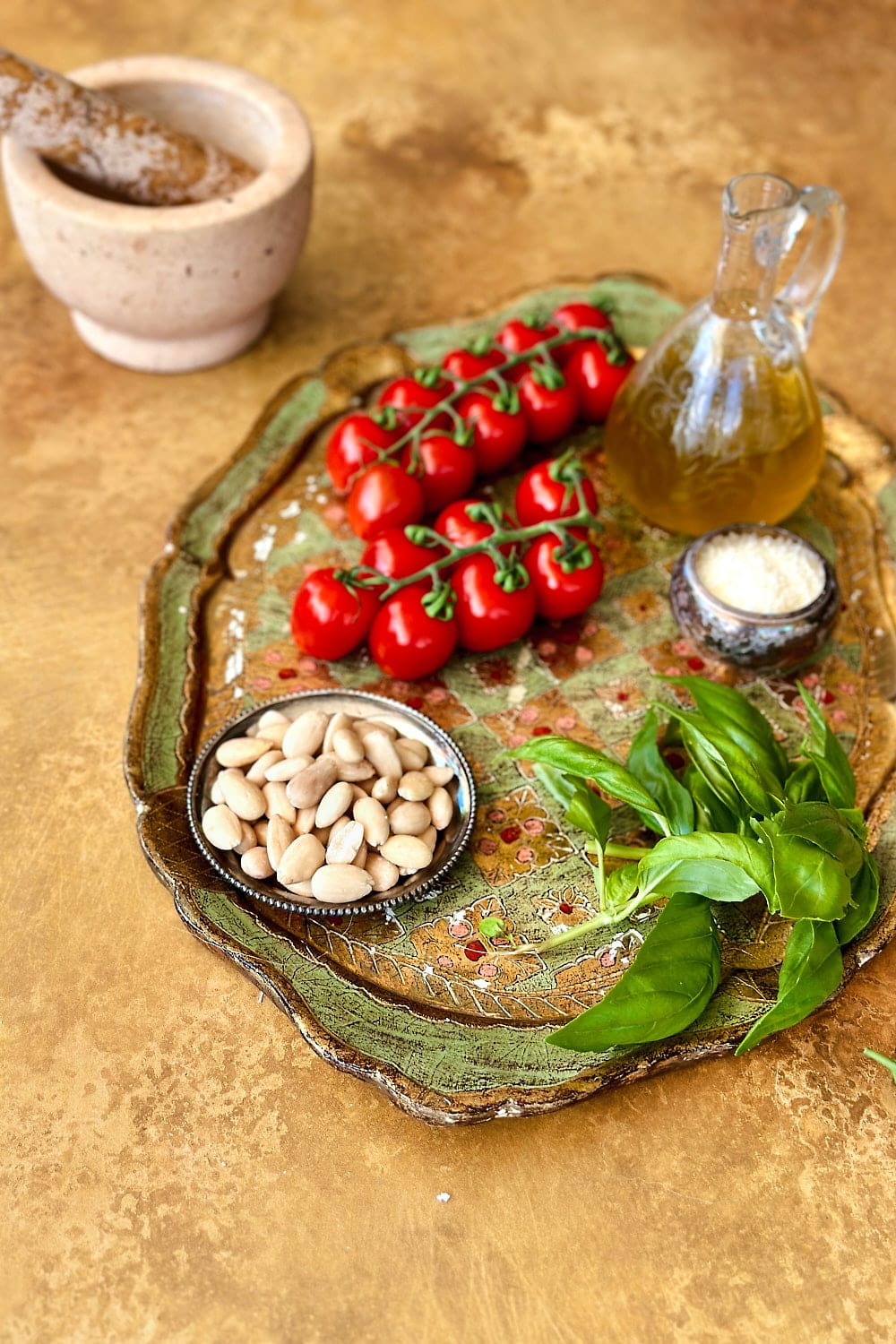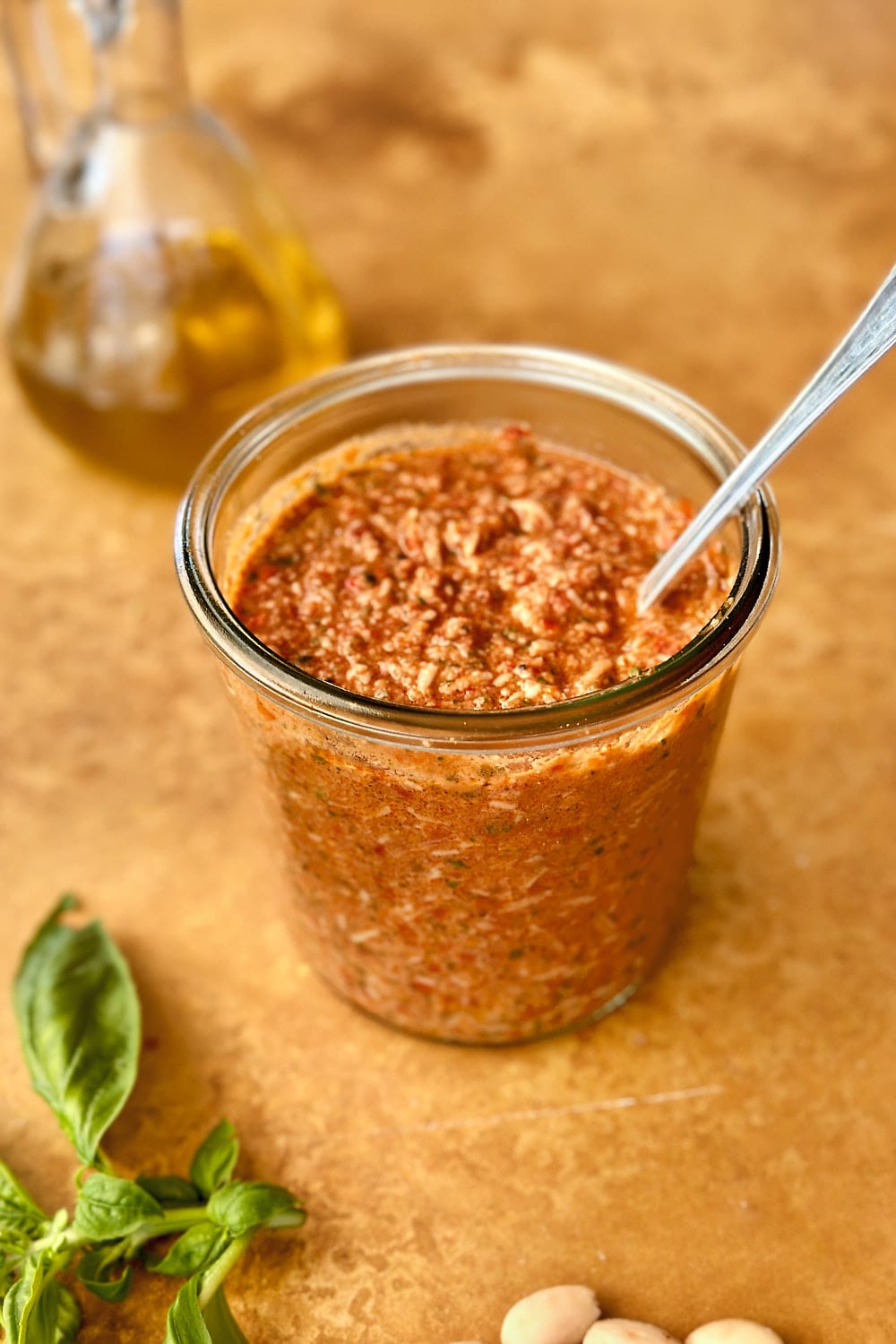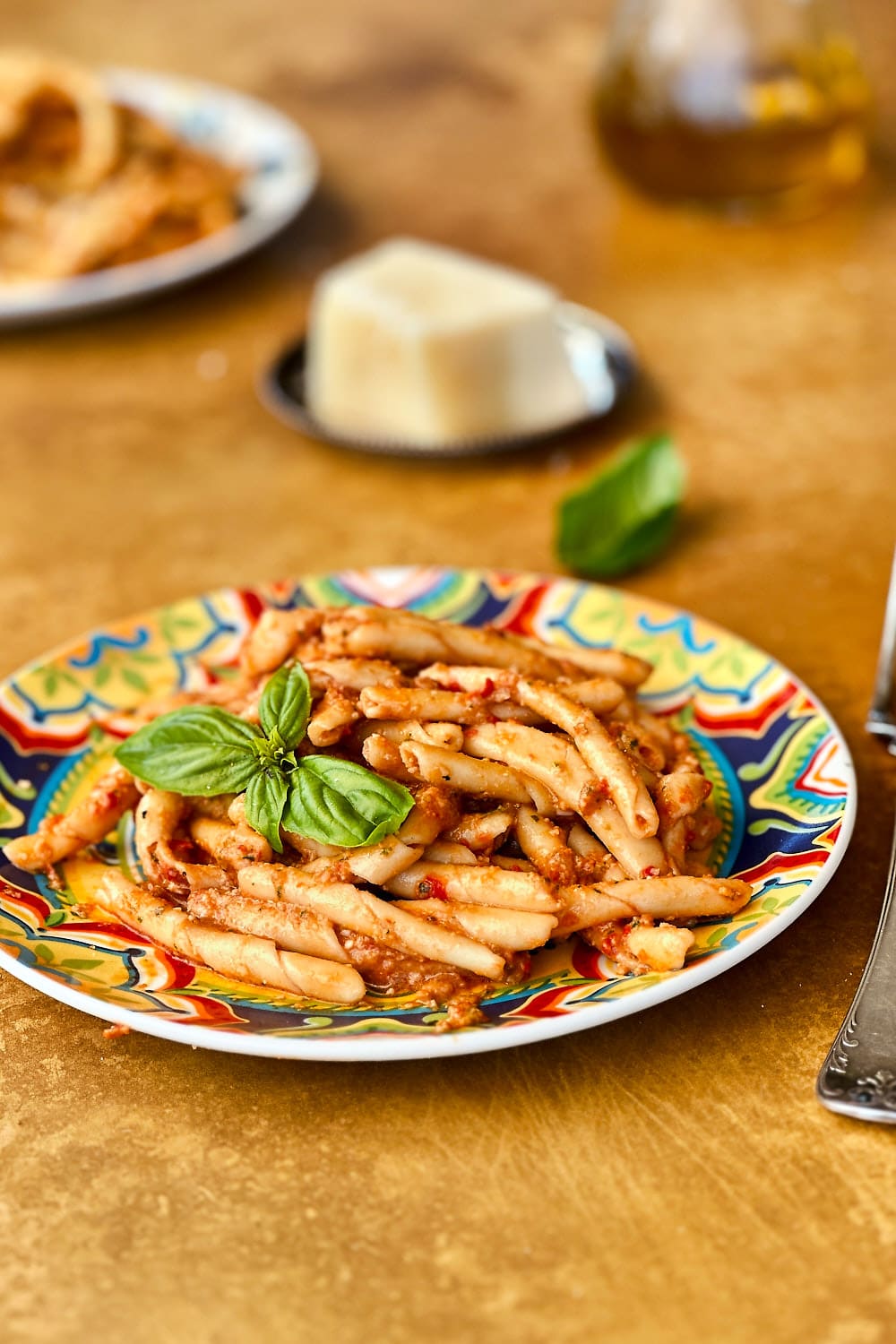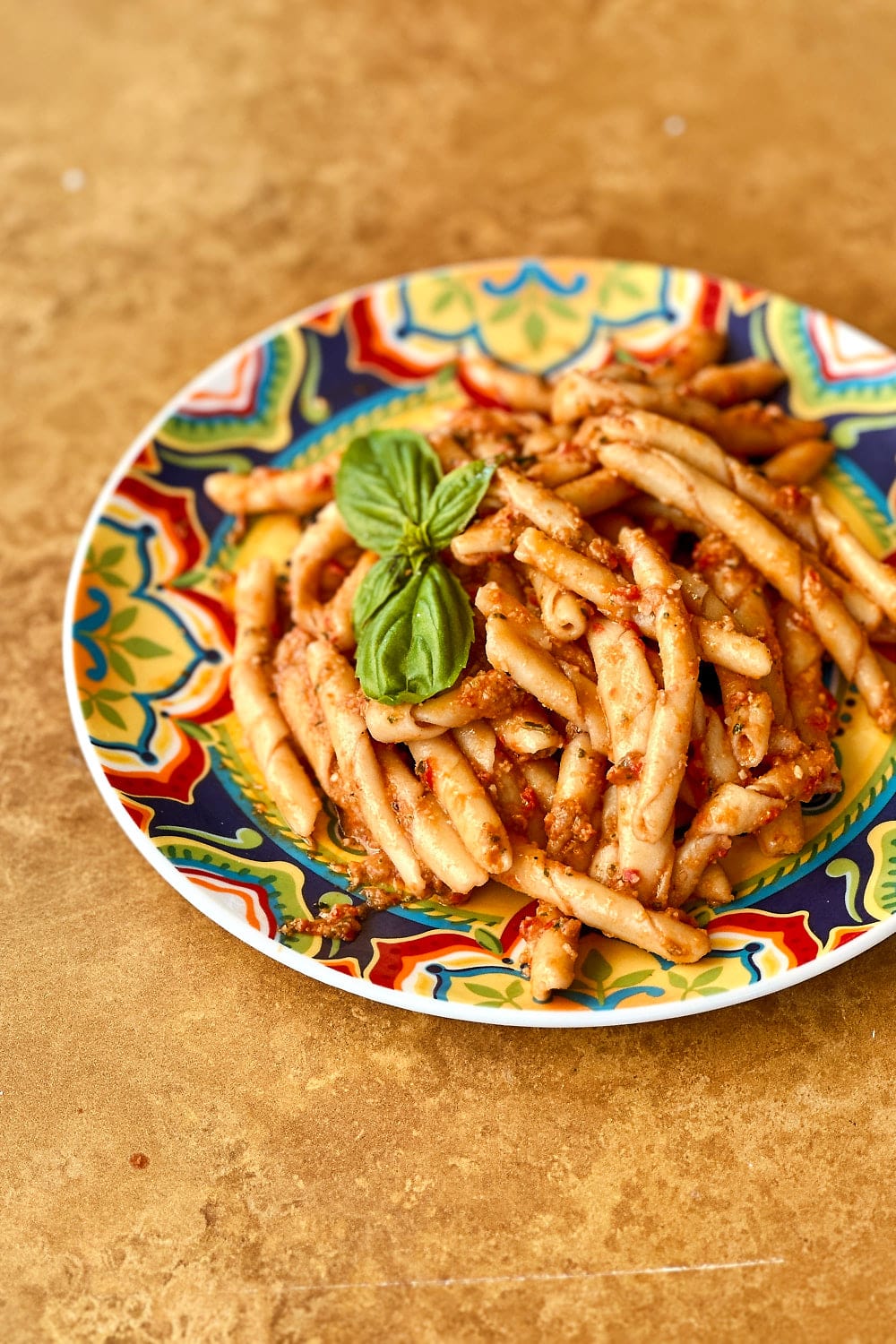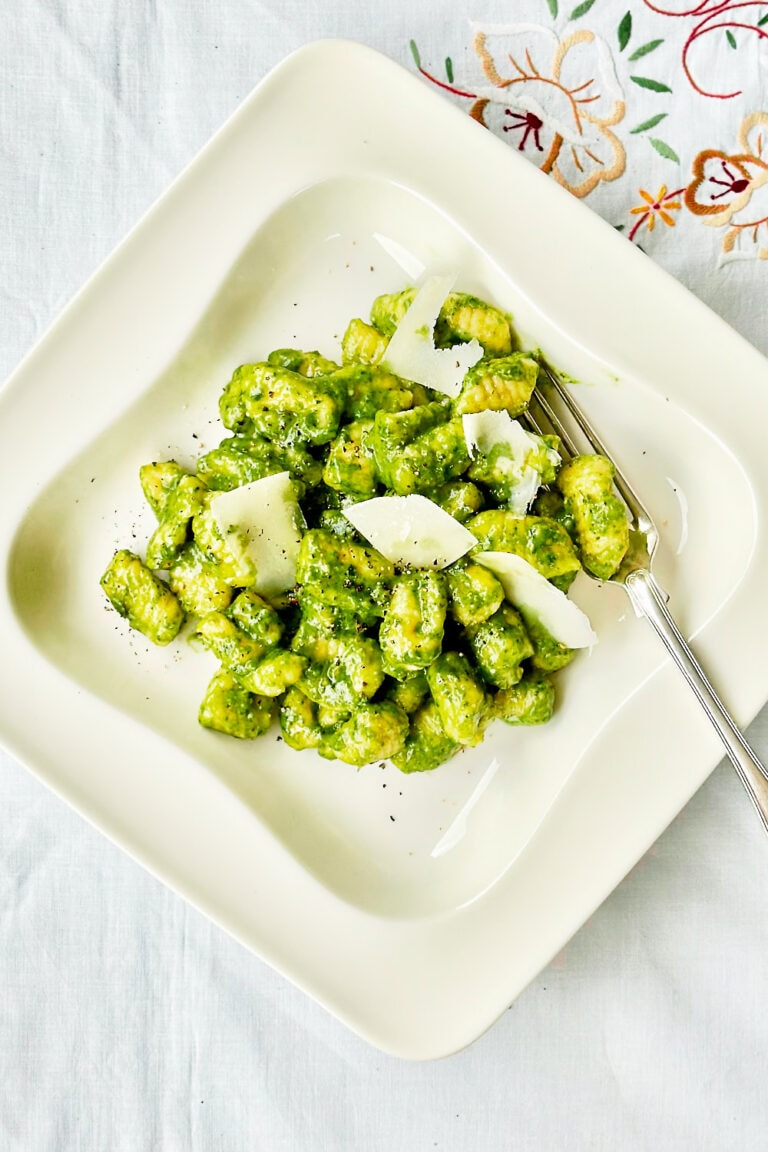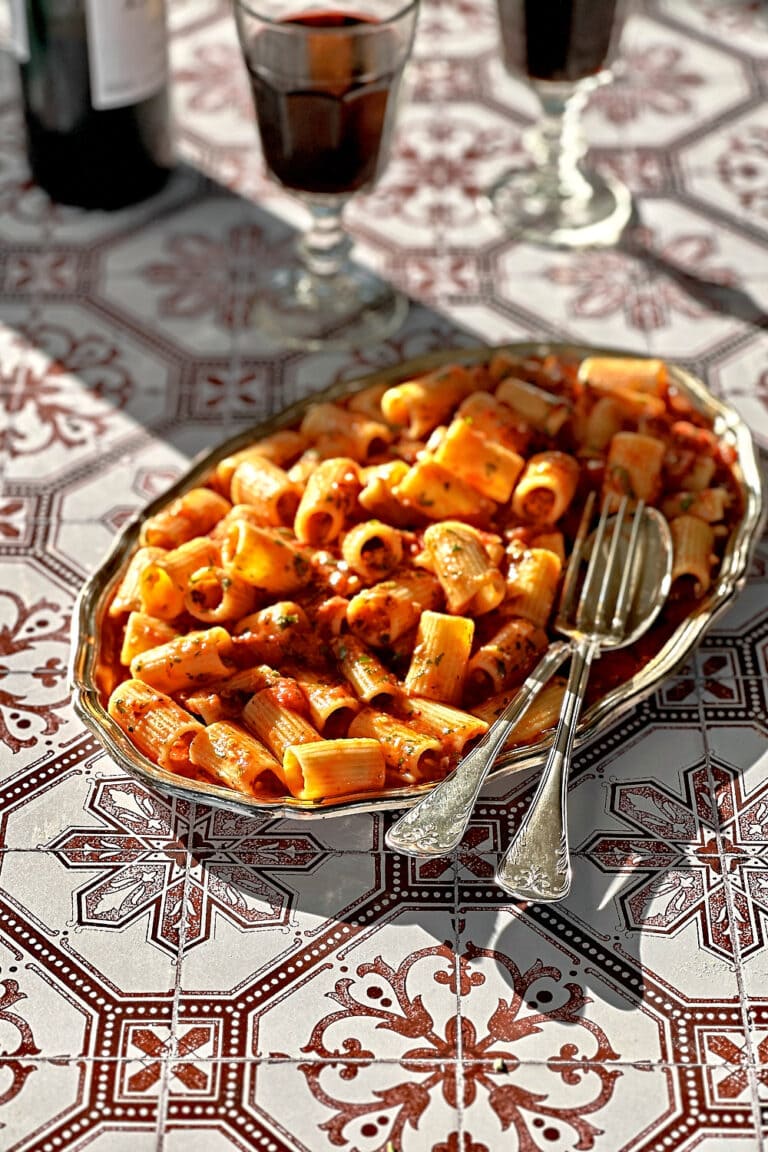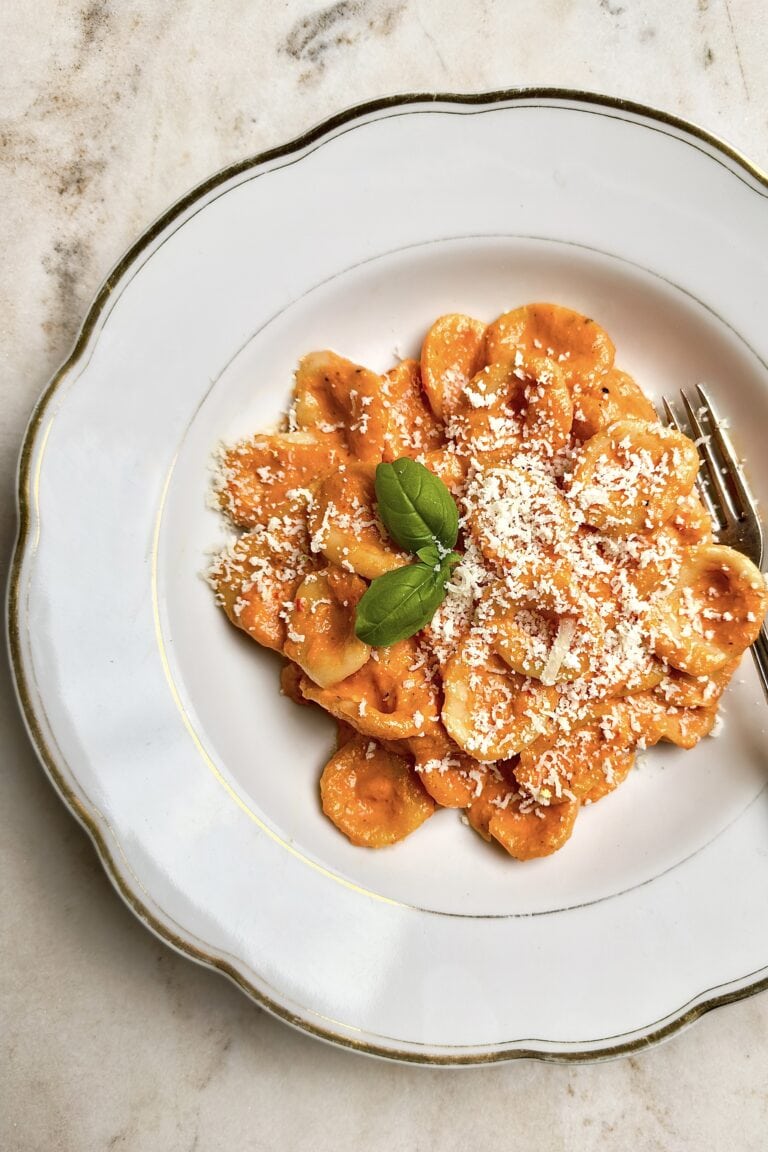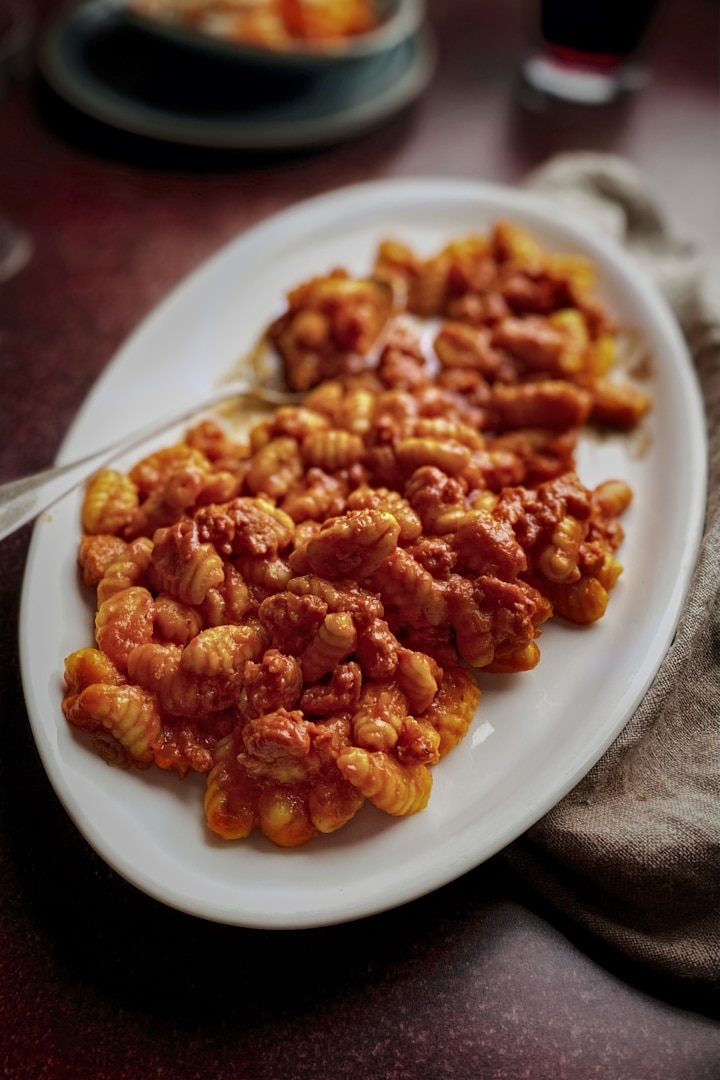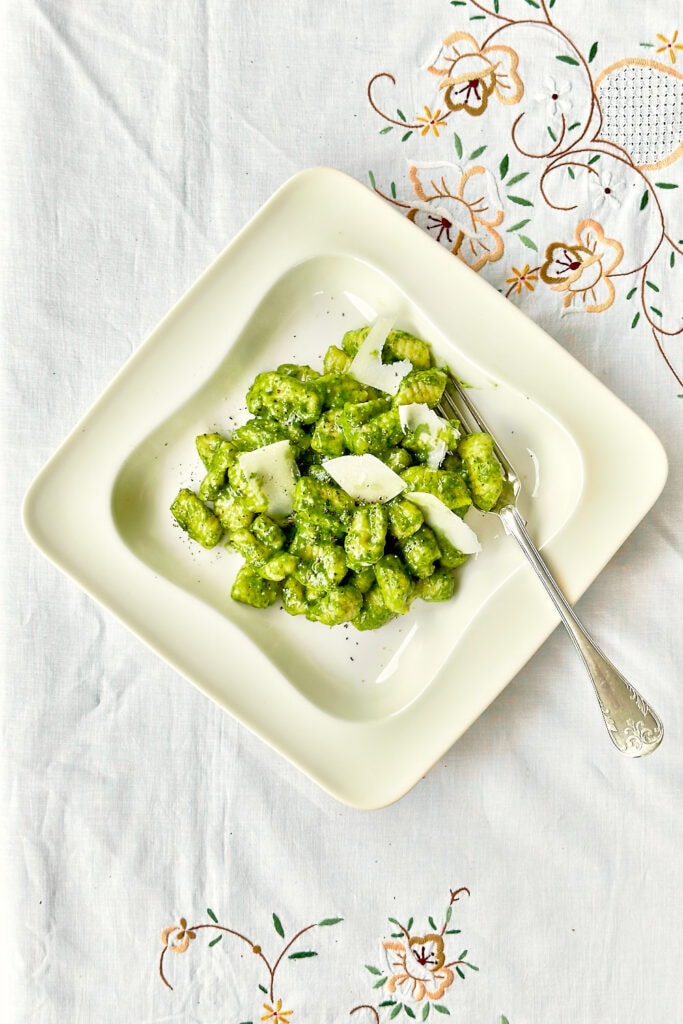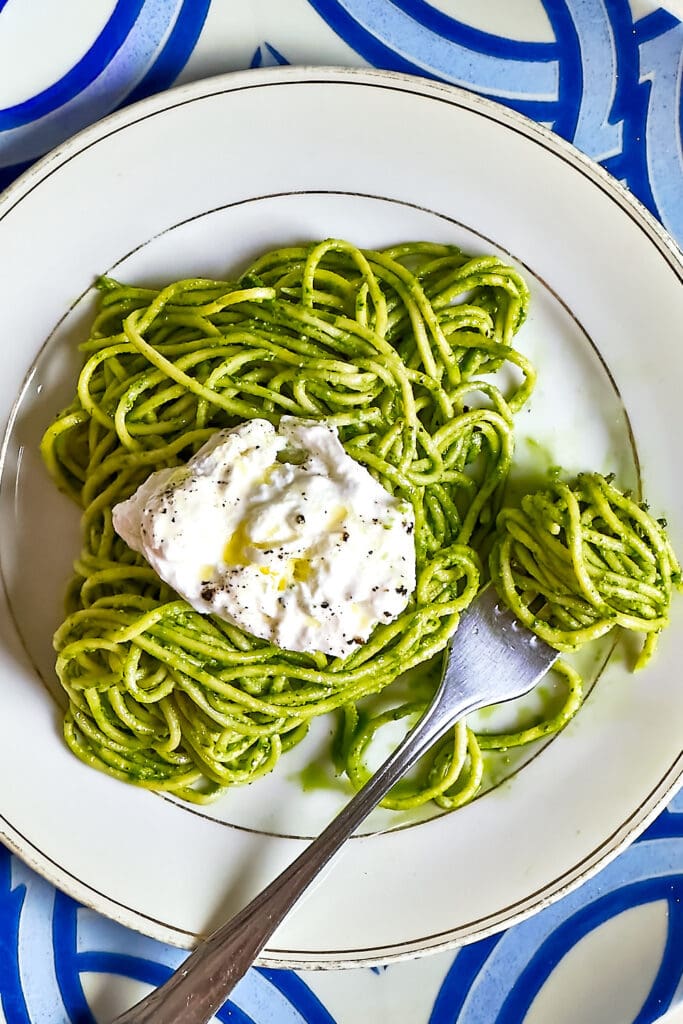Busiate Pasta with Pesto alla Trapanese (Sicilian Tomato Pesto)
Enjoy the vibrant flavors of Sicily with this simple pesto alla Trapanese recipe. Pesto alla Trapanese is a flavorful twist on classic basil pesto and is made with fresh tomatoes, almonds, basil, garlic, and pecorino cheese. It’s a delicious staple in the Mediterranean cuisine and commonly served with Busiate pasta.

Ingredients and Tools You’ll Need
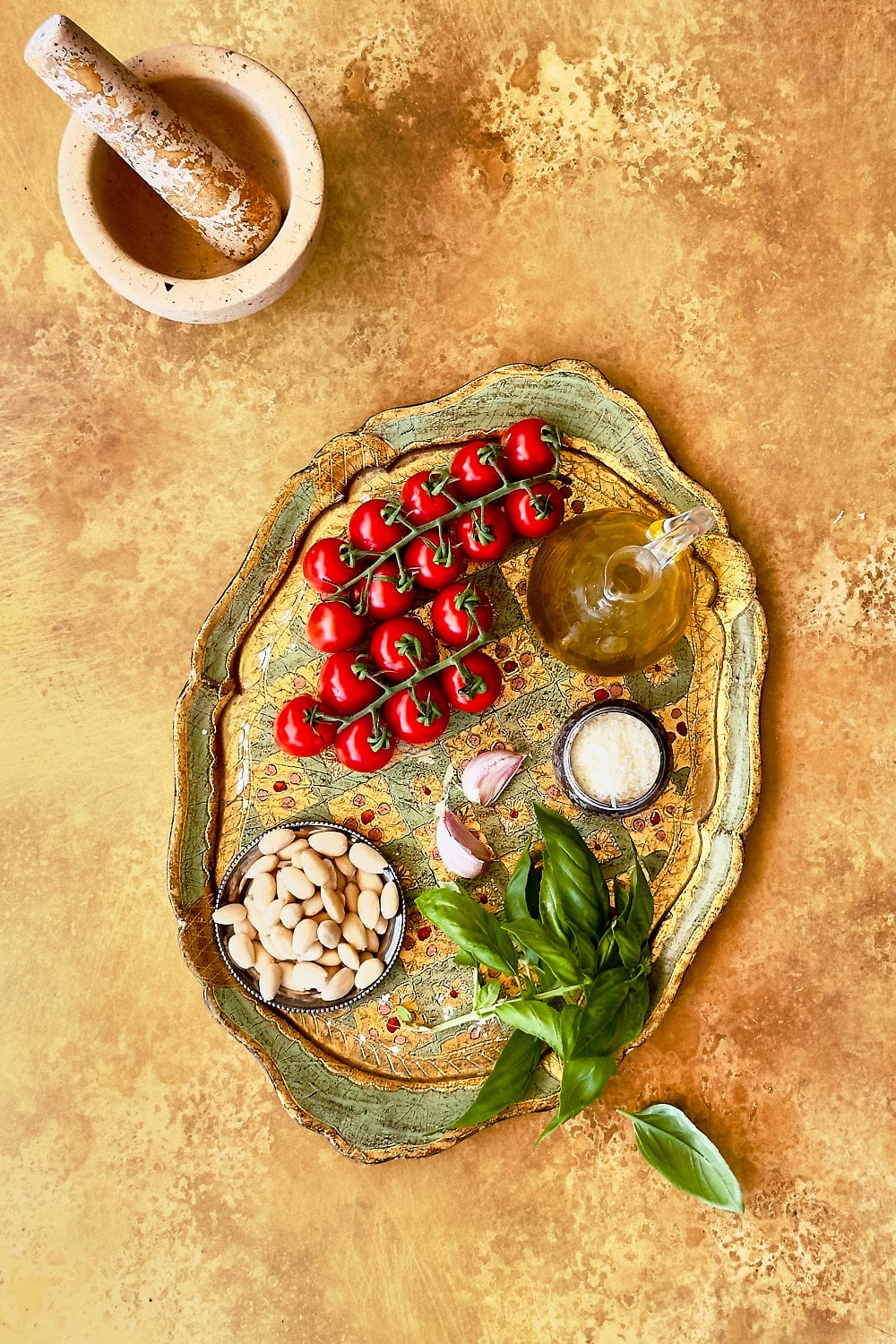
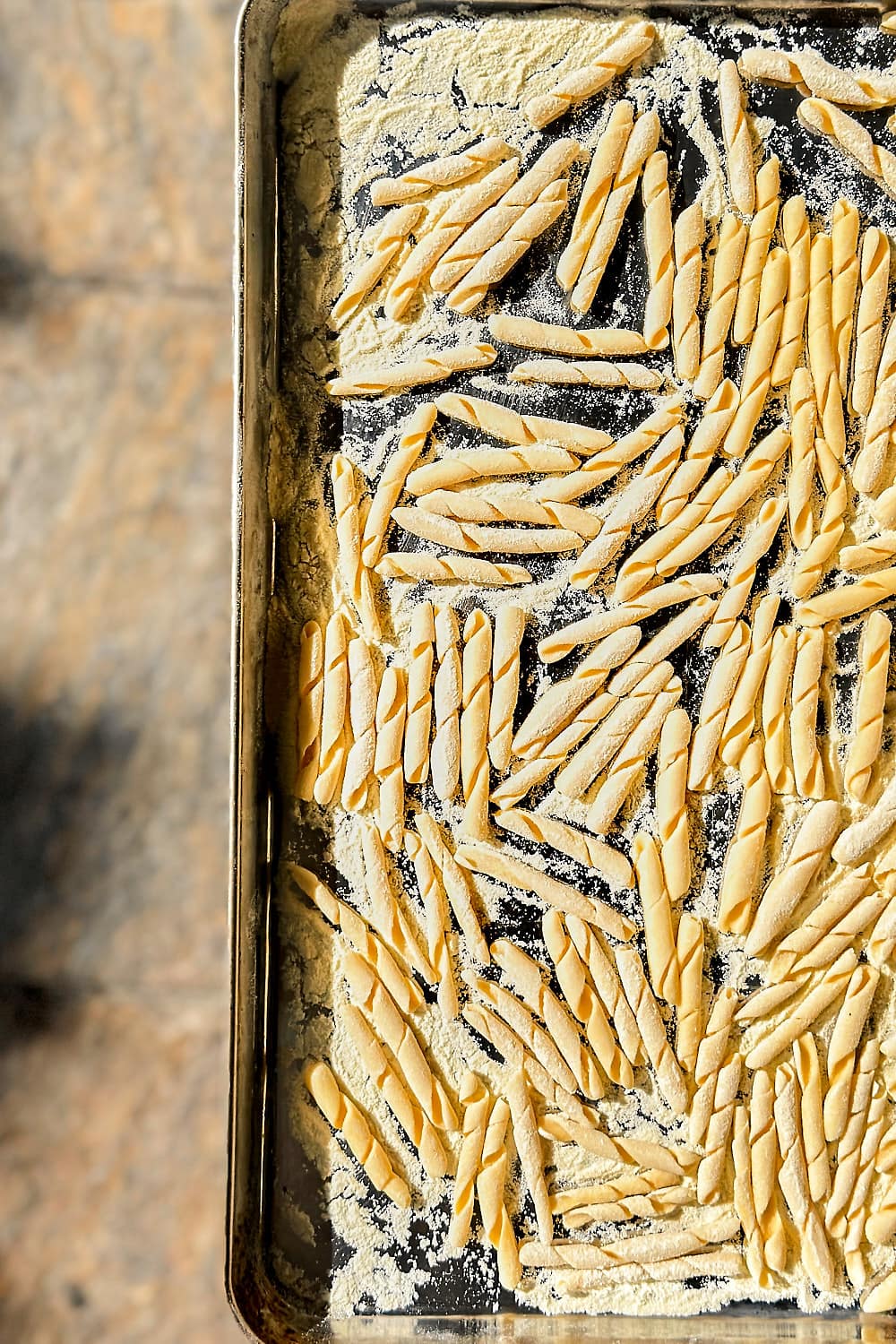
Step-by-Step Instructions
Option 1: With a Mortar and Pestle
make the Pesto alla trapanese:
Roughly chop the cherry tomatoes and basil leaves into smaller chunks. This makes it easier to grind the ingredients afterward.
Add a pinch of salt and the garlic cloves to a mortar and pestle. Start pounding and grinding the garlic until it turns into a smooth paste.
Add the blanched almonds and continue the pounding and grinding motion until they are finely chopped and crumbly. To achieve the typical rustic texture of Trapanese pesto, the almonds should still have a slightly coarse texture and shouldn’t be completely pulverized.
Then, add the basil and grind it in circular motions to break down the leaves and release their aroma. The basil should retain some texture and a vibrant green color. Avoid overworking the basil, as this might result in bitterness and a loss of its fresh and aromatic taste.
Next, add the tomatoes and use the pestle to break them down while incorporating them into the mixture. This step adds moisture and helps combine the ingredients into a sauce.
Lastly, stir in the finely grated Pecorino Romano and drizzle in the extra virgin olive oil while continuing to stir and mix the ingredients. Season with salt and black pepper to taste.
Cook the pasta and toss it with the pesto:
Bring a large pot of water to a rolling boil. Meanwhile, transfer the pesto to a saucepan or skillet and heat it over low-medium heat. You want to warm the pesto slowly and gently without bringing it to a boil. Stir the sauce occasionally as it warms to ensure even heating.
Once the water is boiling, add a generous amount of salt and cook the pasta according to package instructions, or for about 2 minutes if you are using fresh, homemade pasta. Keep in mind that fresh pasta cooks very quickly. Keep an eye on it and check for doneness frequently to prevent overcooking. When the pasta is done, drain it with a skimmer or slotted spoon and transfer it directly to the skillet with the pesto. Add a splash of pasta water. This loosens up the pesto and turns it into a creamy, silky sauce. Toss and stir until the pasta is evenly coated with pesto. Garnish the pasta with fresh basil and serve it with grated Pecorino Romano or Parmesan cheese.
Option 2: With a Food Processor
Blend the ingredients:
For a quicker and easier preparation, you can make the pesto using a food processor. Add the almonds, garlic, basil leaves, and cherry tomatoes to the container of a blender. Pulse a few times until the ingredients come together into a sauce that’s still slightly coarse with some chunky bits. Trapanese pesto is known for its rustic texture and doesn’t need to be completely smooth. Then, transfer the sauce to a mixing bowl and stir in the grated cheese and olive oil. Season with salt and pepper to taste. Follow the steps above to cook the pasta and toss it with the pesto. Enjoy!
Tips & Tricks
Common Questions About Pesto alla Trapanese
More Pasta Recipes You May Like:
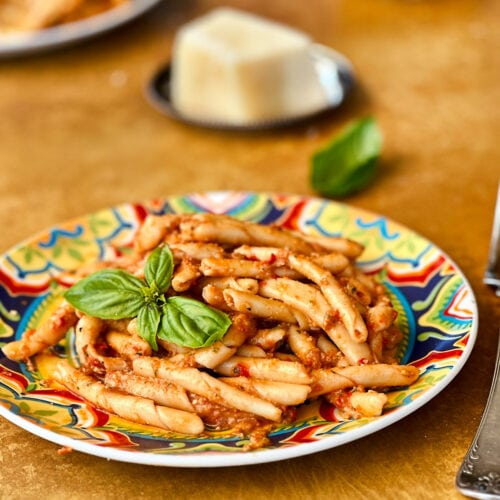
Busiate Pasta with Pesto alla Trapanese (Sicilian Tomato Pesto)
Equipment
- Mortar and pestle or standmixer
Ingredients
For the pesto:
- 2 garlic cloves
- 70 g blanched almonds
- 20 g fresh basil leaves
- 300 g cherry tomatoes
- 70 g pecorino romano – finely grated
- 50 g extra virgin olive oil
- salt and pepper to taste
To serve:
- 400 g dried pasta OR 600 g fresh busiate pasta – to make the pasta from scratch you will need 400 g semolina flour and 200 g water.
- grated cheese
- fresh basil – to garnish
Instructions
OPTION 1: WITH A MORTAR AND PESTLE
- Roughly chop the cherry tomatoes and basil leaves into smaller chunks. This makes it easier to grind the ingredients afterward.
- Add a pinch of salt and the garlic cloves to a mortar and pestle. Start pounding and grinding the garlic until it turns into a smooth paste.
- Add the blanched almonds and continue the pounding and grinding motion until they are finely chopped and crumbly. To achieve the typical rustic texture of Trapanese pesto, the almonds should still have a slightly coarse texture and shouldn’t be completely pulverized.
- Then, add the basil and grind it in circular motions to break down the leaves and release their aroma. The basil should retain some texture and a vibrant green color. Avoid overworking the basil, as this might result in bitterness and a loss of its fresh and aromatic taste.
- Next, add the tomatoes and use the pestle to break them down while incorporating them into the mixture. This step adds moisture and helps combine the ingredients into a sauce.
- Lastly, stir in the finely grated Pecorino Romano and drizzle in the extra virgin olive oil while continuing to stir and mix the ingredients. Season with salt and black pepper to taste.
- Bring a large pot of water to a rolling boil. Meanwhile, transfer the pesto to a saucepan or skillet and heat it over low-medium heat. You want to warm the pesto slowly and gently without bringing it to a boil. Stir the sauce occasionally as it warms to ensure even heating.
- Once the water is boiling, add a generous amount of salt and cook the pasta according to package instructions, or for about 2 minutes if you are using fresh, homemade pasta. Keep in mind that fresh pasta cooks very quickly. Keep an eye on it and check for doneness frequently to prevent overcooking. When the pasta is done, drain it with a skimmer or slotted spoon and transfer it directly to the skillet with the pesto. Add a splash of pasta water. This loosens up the pesto and turns it into a creamy, silky sauce. Toss and stir until the pasta is evenly coated with pesto. Garnish the pasta with fresh basil and serve it with grated Pecorino Romano or Parmesan cheese.
OPTION 2: WITH A FOOD PROCESSOR
- For a quicker and easier preparation, you can make the pesto using a food processor. Add the almonds, garlic, basil leaves, and cherry tomatoes to the container of a blender. Pulse a few times until the ingredients come together into a sauce that’s still slightly coarse with some chunky bits. Trapanese pesto is known for its rustic texture and doesn’t need to be completely smooth. Then, transfer the sauce to a mixing bowl and stir in the grated cheese and olive oil. Season with salt and pepper to taste. Follow the steps above to cook the pasta and toss it with the pesto. Enjoy!

